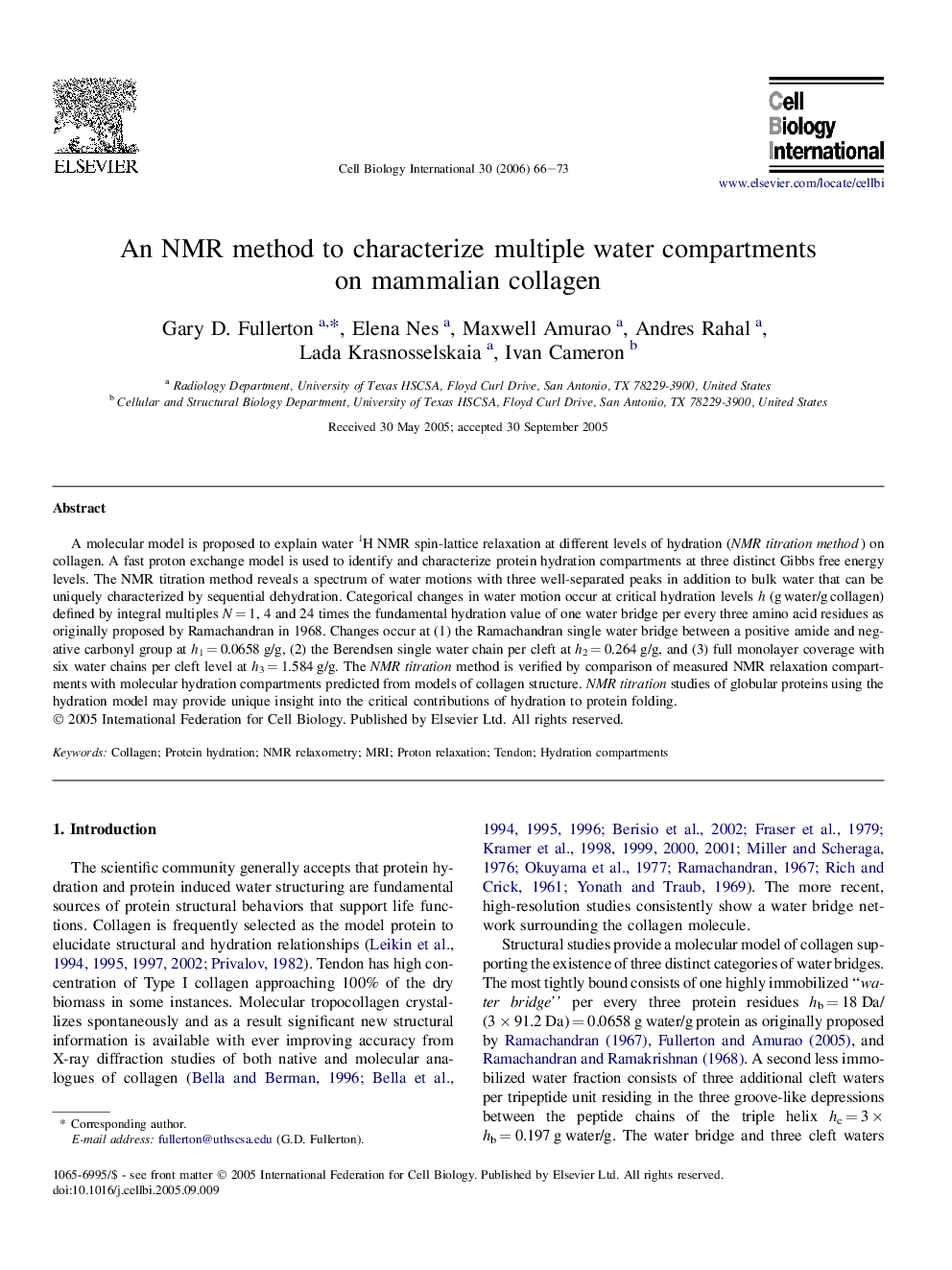| Article ID | Journal | Published Year | Pages | File Type |
|---|---|---|---|---|
| 2068025 | Cell Biology International | 2006 | 8 Pages |
Abstract
A molecular model is proposed to explain water 1H NMR spin-lattice relaxation at different levels of hydration (NMR titration method) on collagen. A fast proton exchange model is used to identify and characterize protein hydration compartments at three distinct Gibbs free energy levels. The NMR titration method reveals a spectrum of water motions with three well-separated peaks in addition to bulk water that can be uniquely characterized by sequential dehydration. Categorical changes in water motion occur at critical hydration levels h (g water/g collagen) defined by integral multiples N = 1, 4 and 24 times the fundamental hydration value of one water bridge per every three amino acid residues as originally proposed by Ramachandran in 1968. Changes occur at (1) the Ramachandran single water bridge between a positive amide and negative carbonyl group at h1 = 0.0658 g/g, (2) the Berendsen single water chain per cleft at h2 = 0.264 g/g, and (3) full monolayer coverage with six water chains per cleft level at h3 = 1.584 g/g. The NMR titration method is verified by comparison of measured NMR relaxation compartments with molecular hydration compartments predicted from models of collagen structure. NMR titration studies of globular proteins using the hydration model may provide unique insight into the critical contributions of hydration to protein folding.
Related Topics
Life Sciences
Biochemistry, Genetics and Molecular Biology
Biophysics
Authors
Gary D. Fullerton, Elena Nes, Maxwell Amurao, Andres Rahal, Lada Krasnosselskaia, Ivan Cameron,
